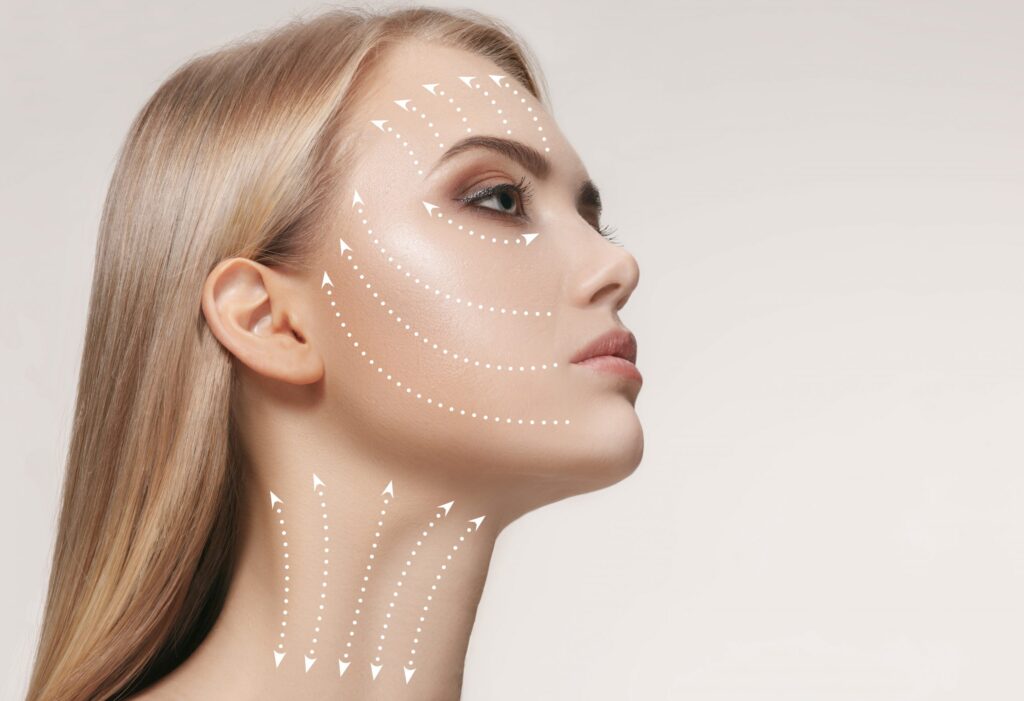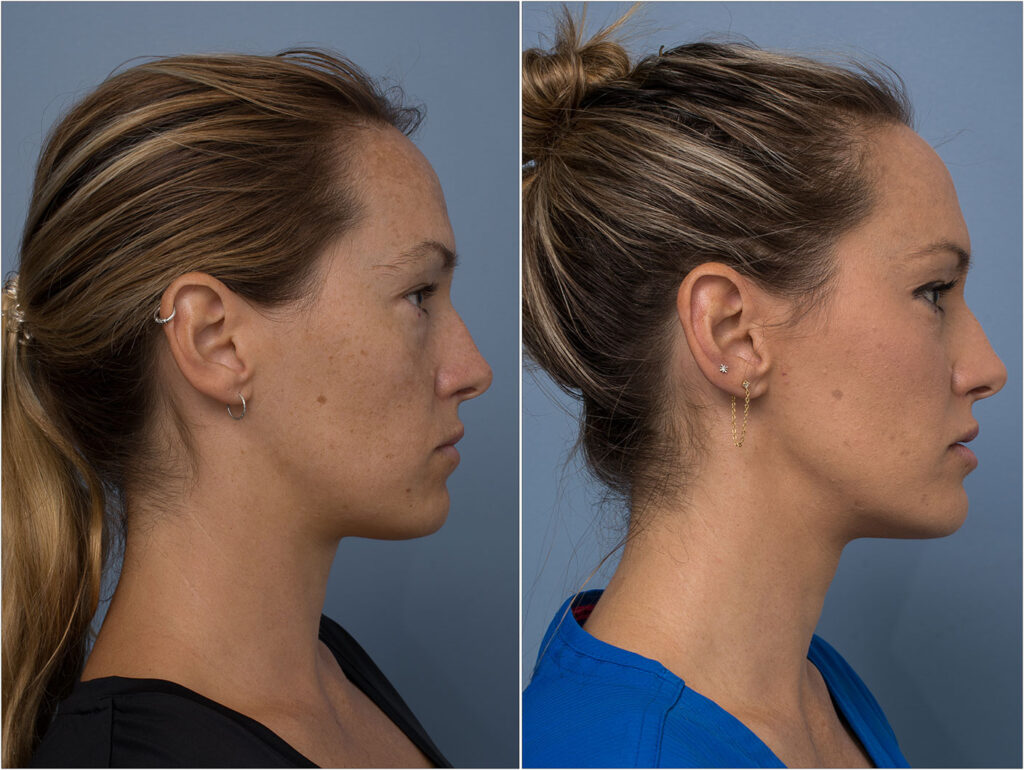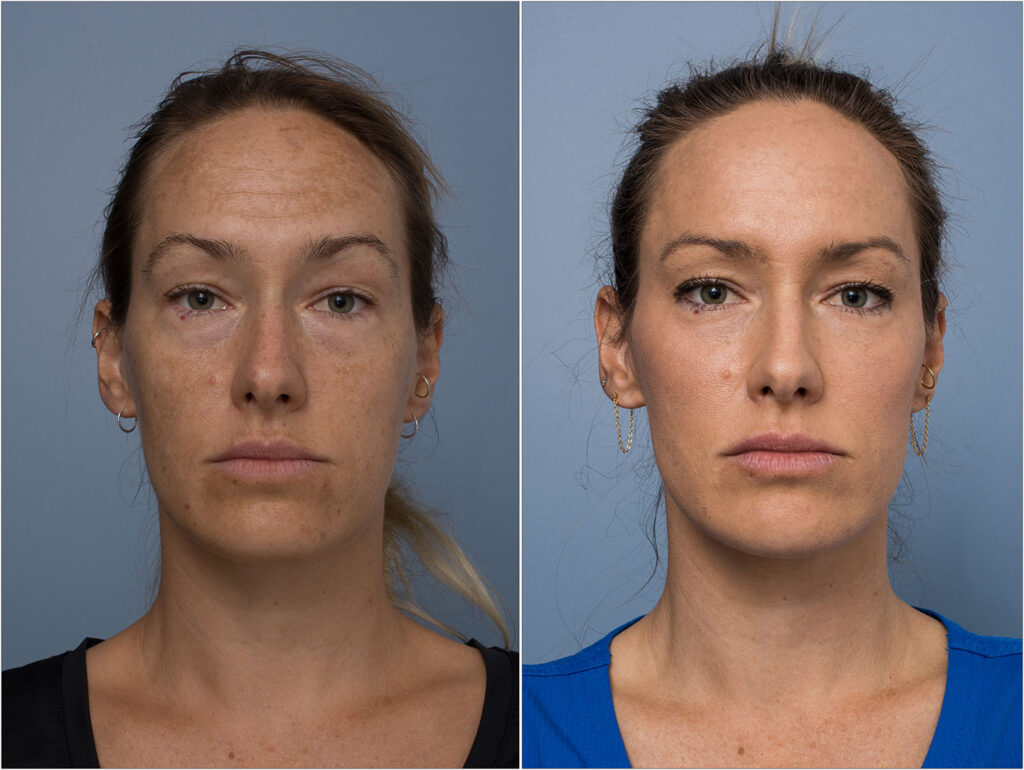Facial Filler
Facial filler is substances injected into the skin to smooth wrinkles and make them less noticeable. Injection of a facial filler is generally an outpatient procedure that’s done with numbing medication. The procedure takes up to an hour.
You might have mild discomfort, bruising and swelling for up to a week. After the swelling goes down, you might need a touch-up injection for best results. How long the effect lasts depends on the type of wrinkle and filler, among other factors.
Facial fillers, or soft tissue fillers, generally aren’t used for people who have suppressed immune systems or who take blood-thinning medications (anticoagulants).

Types of Facial Fillers
Facial fillers include:
- Hyaluronic acid (Restylane, Juvéderm, others).This natural component of the skin’s connective tissue is the most common filler used for wrinkles. The results typically last 6 to 12 months.
- Calcium hydroxyapatite (Radiuses).This filler is used to contour the jaw line, restore volume in the cheeks, and treat deeper wrinkles and skin folds. The results last up to a year when used for contouring and 3 years when used to fill wrinkles.
- Fat grafting.With this method, fat is removed from the lower abdomen or other area through liposuction. It is then injected through small incisions into the cheek, temple, lips or forehead. The effects might be permanent. But achieving the desired results usually requires more than one session as well as overfilling the site because the body reabsorbs some of the fat.
- Permanent soft tissue filler (Bellafill).This filler is used to smooth deep wrinkles around the mouth. The body can’t absorb this type of filler, so it doesn’t require reinjection. Permanent soft tissue filler generally isn’t recommended as a first-time facial filler treatment.
- Poly-L-lactic acid (Sculptra).This product is used to restore facial volume lost due to aging or illness. Two or three sessions are usually required. The effects last up to two years.
What to Expect During Treatment?
Pre-treatment consultation
Your injectable filler treatment
Just before the actual treatment, the area will be cleaned, and you may be given a topical anesthetic to numb the area prior to injection. Many filler products also contain lidocaine, a mild anesthetic, which is intended to help minimize discomfort during and after your treatment. Your provider will then inject a precise amount of filler strategically beneath the skin.
Depending on the product and the areas treated, you should be able to notice results immediately after receiving filler injections. Some patients experience mild bruising and swelling, but these are temporary and should subside over the days following treatment. You will be able to go back to your normal activities right after treatment, but your cosmetic surgeon may ask you to take the day off from exercise or other strenuous activity.
If you are having fat injections…
Risks
As with any procedure, injecting facial filler for wrinkles has risks, including:
- Allergic reaction at the injection site or throughout the body
- Swelling and inflammation
- Changes in skin color (post inflammatory hyperpigmentation) on brown or Black skin
- Mild pain
- Bleeding or bruising at the injection site
- Infection
- Scarring
- Irregularities in the surface, contours and firmness of the skin
- Rarely, blood vessel damage
How Long Do the Results Last?
How long the effects of dermal fillers will last depend on the product, the area of treatment, and the patient. Generally speaking, the denser the product is and the more deeply it is injected, the longer it will last, although this is not a hard and fast rule. To maintain your results, your cosmetic surgeon will simply repeat treatment, adjusting the amount and techniques as necessary to ensure optimal results.
Hyaluronic acid fillers tend to be the most temporary option, and therefore are often recommended for first-time filler patients. These will typically last from 6 to 18 months. Injections to the lips will wear out a little faster than those to the nasolabial folds. Certain HA fillers, such as VOLUMA, are formulated to last longer, but are usually limited to certain areas, such as the cheeks.
However, some of the injected fat is expected not survive. Initially, your cosmetic surgeon may overfill the treatment area, resulting in an initially fuller look that will gradually settle into a more natural appearance.
“Some dermal fillers can last for 6 to 12 months, while other dermal fillers can last 2 to 5 years,” says Dr. Sapna Palepu of Spring Street Dermatology. The most commonly used dermal fillers contain hyaluronic acid, a natural compound that aids in the production of collagen and elastin.
In studies of dermal fillers approved by the U.S. Food and Drug Administration, people generally report they are satisfied with their treatment results. However, dermal fillers are not for everyone. Dermal fillers may not be appropriate for people with certain conditions, such as bleeding disorders or some allergies.
The injection itself feels kind of like a splinter, but if it’s done properly, the pain should go away right away. The lips may swell a little for a few hours after the procedure. It can feel a bit unsettling, but it should never be painful.
A dermal filler treatment can help to rejuvenate the skin and enhance shape or fullness in specific areas of the face. They have the bonus of reducing wrinkles, fading fine lines, reversing the loss of volume and rehydrating deeper skin layers.


